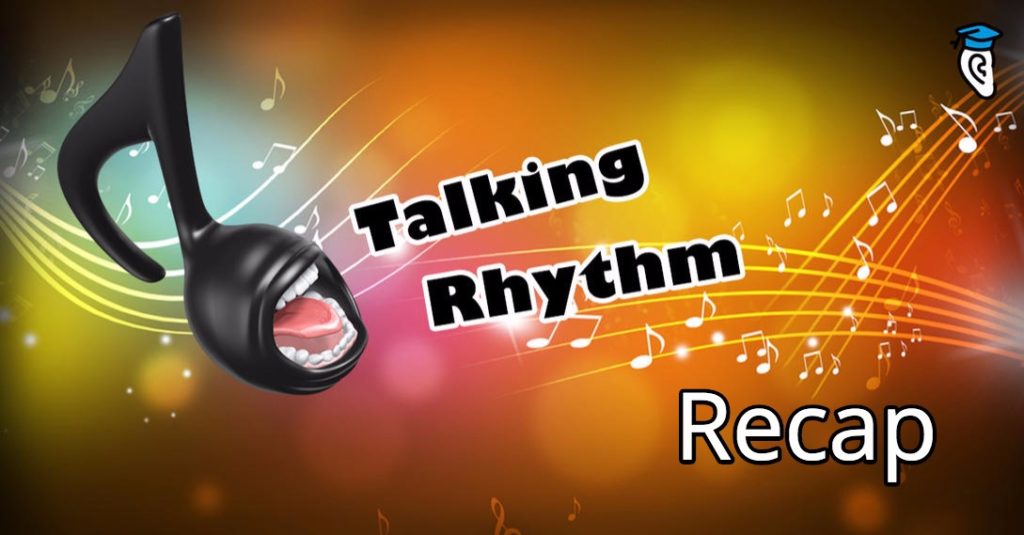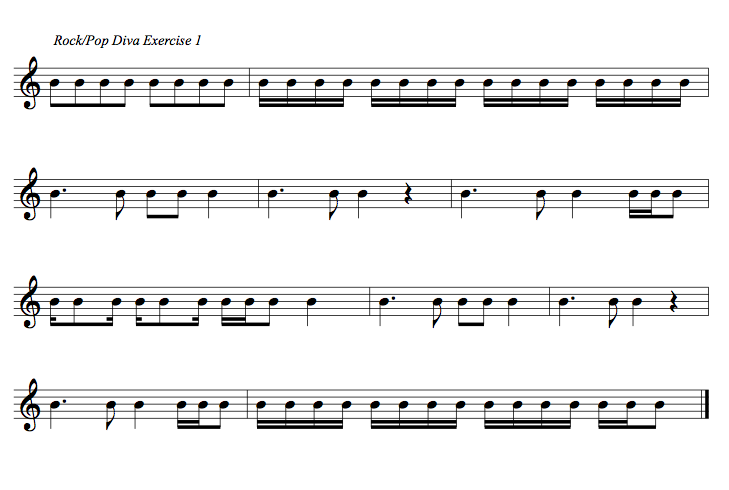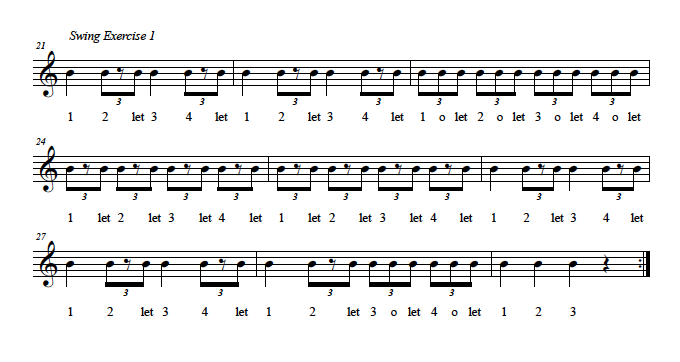In this Talking Rhythm series you have learned two different methods for counting out notated rhythms. In the count chant method you learned how to use simple numbers and syllables like “ah” and “ee” to count out notation. You also learned about the Kodály Method and learned how to use syllables like “ti” and “tika” to count syncopated rhythms using a tried and true teaching method.
These two methods let you take rhythms like this:

and apply spoken labels to know immediately how the notated rhythm should sound, or how the heard rhythm should be written down:
If you have not had a chance to read the previous articles in this series, take a moment to go back and learn how these two methods work:
- Introduction
- Counting 101 (2, 3, 4)
- Counting 16th Notes
- Counting Triplets and Compound Rhythms
- The Kodály Method
- Syncopated Rhythms and the Kodály Method
In this article you will apply all the skills you’ve learned to figure out three different examples that use common rhythms from rock/pop, jazz, and Latin music. We will use the method that works best for that particular rhythm.
Most musicians end up using a combination of methods to count, especially depending on the tempo or what is most familiar to them. Depending on the type of music that you play, you may find that one method may work better than another for you.
As you have learned in this series, these rhythm-speaking methods can be used both to write down rhythms you hear, or to perform rhythms you see notated. In the exercises which follow you can choose to focus on one or other skill by either listening to the rhythm or looking at the score to begin with. If you find it difficult, try using both together to understand the rhythm.
Exercise 1: Rock
In this exercise you will practice going from a simple rhythm to a more complex rock rhythm. Notice the similarity in the different rhythms. See if you recognize any of these musical patterns from commercial music as you practice. If possible, practice tapping your foot to the pulse as you count out loud. Knowing where the beat falls as you count out loud will help you develop these advanced music skills.
For this example we will use the Kodály method of counting.
- Look at the unlabelled score or play the audio sample several times
- Try to determine the right syllables to use for these rhythms
- Practice tapping the beat along with the audio sample
- Talk out the rhythm with and without the audio sample
Once you’re happy with the way to talk this rhythm using the Kodály method, check your answer:
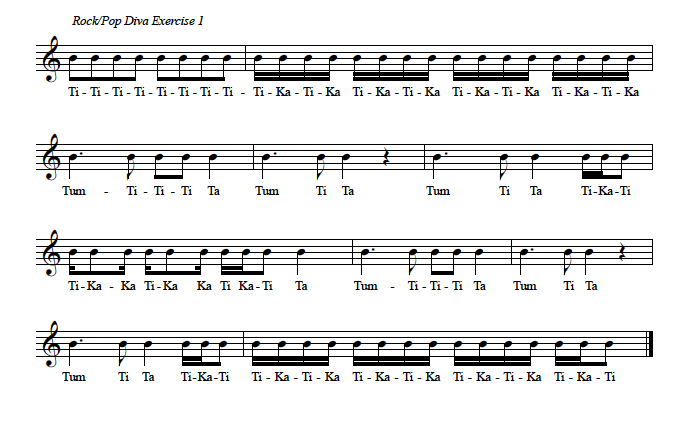
Exercise 2: A Little Bit of Jazz
In this rhythm exercise you will practice a moderate swing beat using the count chant method. Practice tapping your foot to the pulse as you listen the first few times. Remember in the count chant method you will use syllables like “1-o-let” to count out triplet rhythms.
A note about notation
This example uses fully notated jazz notation. Triplets are used to notate common swing beats. In other words, a swung 8th note rhythm will look like this:

Many jazz charts instead notate using “straight” rhythm, with a written instruction to the musician to “swing” the beat or a small indication of how to interpret eighth notes, as shown below. This simplifies writing for the arranger and is a universally-accepted way to notate jazz beats. The example above would look like this instead:

For this example we simply notate out the full jazz rhythm with triplet patterns instead of the shortened version.
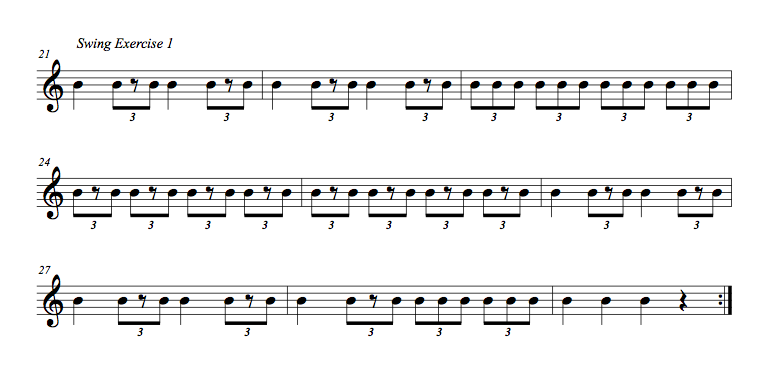
As you progress in your musicianship skills, you will find that you will be able to move easily between different ways of notating rhythm. Right now focus on learning how to understand and practice these rhythms.
- Look at the unlabelled score or play the audio sample several times
- Try to determine the right syllables to use for these rhythms
- Practice tapping the beat along with the audio sample
- Talk out the rhythm with and without the audio sample
Conclusion
Sight-reading rhythm notation and learning to write down rhythms you’ve heard are both common points of frustration among musicians. In this series you’ve learned two different approaches which can be used individually or together, to speak rhythms out loud. These allow you to tackle even quite complex rhythmic patterns like in the examples above without breaking a sweat.
Continue practicing your notation and counting skills with exercises like these. Talk rhythms from real music every day and soon you will be a rhythm pro!
How did you get on with these exercises? What do you need help with? Leave a comment and share your thoughts.

